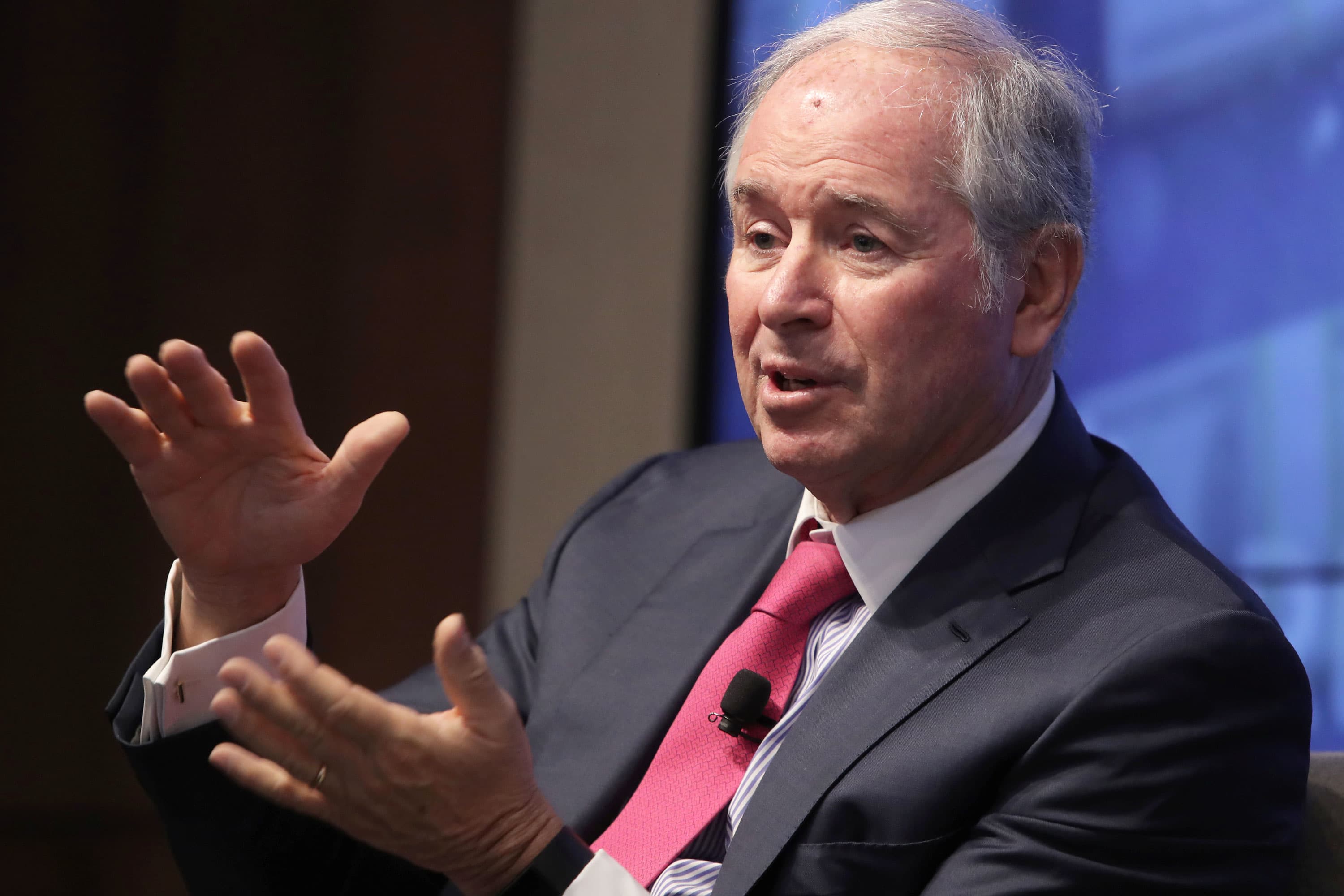Blackstone Group CEO and Co-Founder Steve Schwarzman speaks at a Reuters Newsmaker event in New York, November 6, 2019.
Gary He | Reuters
Private-equity firms are holding onto a record pile of cash. Increased competition might make it harder to spend, however, in order to get the same double-digit returns that have made the group so popular.
The industry — which includes venture capital — had a total $1.45 trillion in “dry powder,” or cash, to invest at the end of 2019, according to data from Preqin. That is the highest on record and more than double what it was five years ago.
Inigo Fraser-Jenkins, head of the portfolio strategy team at Bernstein Research, said the steady cash stream into private equity has been driven by more investors expecting lower returns from public markets. The flood of money is driving up entry prices and could mean lower future returns, he said.
“We think that the returns are going to disappoint,” Fraser-Jenkins told CNBC. “We also do not believe that over the cycle that it can de-correlate from public markets.”
Hedge funds are another popular investment vehicle that has been turned to by institutional investors, like endowments and pension funds. But the hedge fund industry’s returns are lagging by comparison. Over the past five years ending in June, hedge funds posted 5.5% returns, compared with 14.4% for private equity, according to the latest data available from Preqin.
Search for yield
Another reason investors are pouring into the private equity asset class is low global yields. As the 10-year Treasury yield sank below 2% this year, investors went looking for better investment alternatives, according to Nancy Davis, chief investment officer and founder of advisory firm Quadratic Capital. But private equity is still “not a golden goose,” she said.
“There aren’t too many investors with double-digit percentage gain — so, as has been the case for the last few years, many feel like they have no choice but to get long and try to catch up by chasing the private-equity performance,” Davis said.
The result is “a nervous euphoria” based on “a backed-out narrative: since markets are gaining, the world is doing well go into privates as a long-term investor,” she said.
Davis noted that sentiment has gotten “ridiculously positive,” and is contributing to a rise in valuations. The idea that private equity could continue to produce an internal rate of return, or IRR, of 20% to 25% is “laughable” with bond yields as low as they are, she said.
It’s not just private equity sitting on cash. Revered investor Warren Buffett — a vocal critic of the industry — is sitting on a record $128 billion at Berkshire Hathaway. In recent months, the Omaha-based firm has passed on multiple opportunities to acquire companies as the firm’s cash hoard grew. In November, Buffett stepped away from a bidding war to buy technology distributor Tech Data, and declined to purchase luxury jeweler Tiffany when it was looking for a buyer last year.
Competing with Blackstone
Mega-firms such as Blackstone, Apollo, and KKR have been raising increasingly larger funds for institutional investors. In some cases, they invest in other private-equity funds. Blackstone’s most recent buyout fund this year topped $26 billion — making it the largest of its kind in U.S. history. This year, tech-focused Vista Equity Partners closed a $16 billion fund, while Thoma Bravo raised $12.6 billion for its latest fund.
Despite these monster funds, thousands of other firms have been able to raise money without much consolidation, according to Bain. They are not “gobbling up the market at the expense of other firms,” Brenda Rainey, senior director of Bain & Co.’s global private equity practice.
Still, all of these firms are working with a shot clock. Private-equity investments have a lifecyle of five to 10 years, and money managers need to get that capital out the door within a certain timeframe. But Bain said much of Preqin’s estimated $1.5 trillion total is “fresh” capital that still has time to be invested.
“We don’t have concerns that it will go unspent, the question is, how will it be put to work?” said Rainey. “There’s no shortage of dollars to be put to work or industries to spend them on.”
Many of those opportunities are coming from public markets, where companies are increasingly being taken private — a trend that Rainey expects to continue. Those who are already private are increasingly comfortable staying that way, partially because there’s plenty of capital at every stage. She expects more deal activity despite valuations, which are also elevated in public markets.
“There used to be the notion that in order to get growth capital for any company you had to go to public markets — that’s simply not the case today,” Rainey said. “There continues to be huge investor conviction and we continue to see capital flows.”
